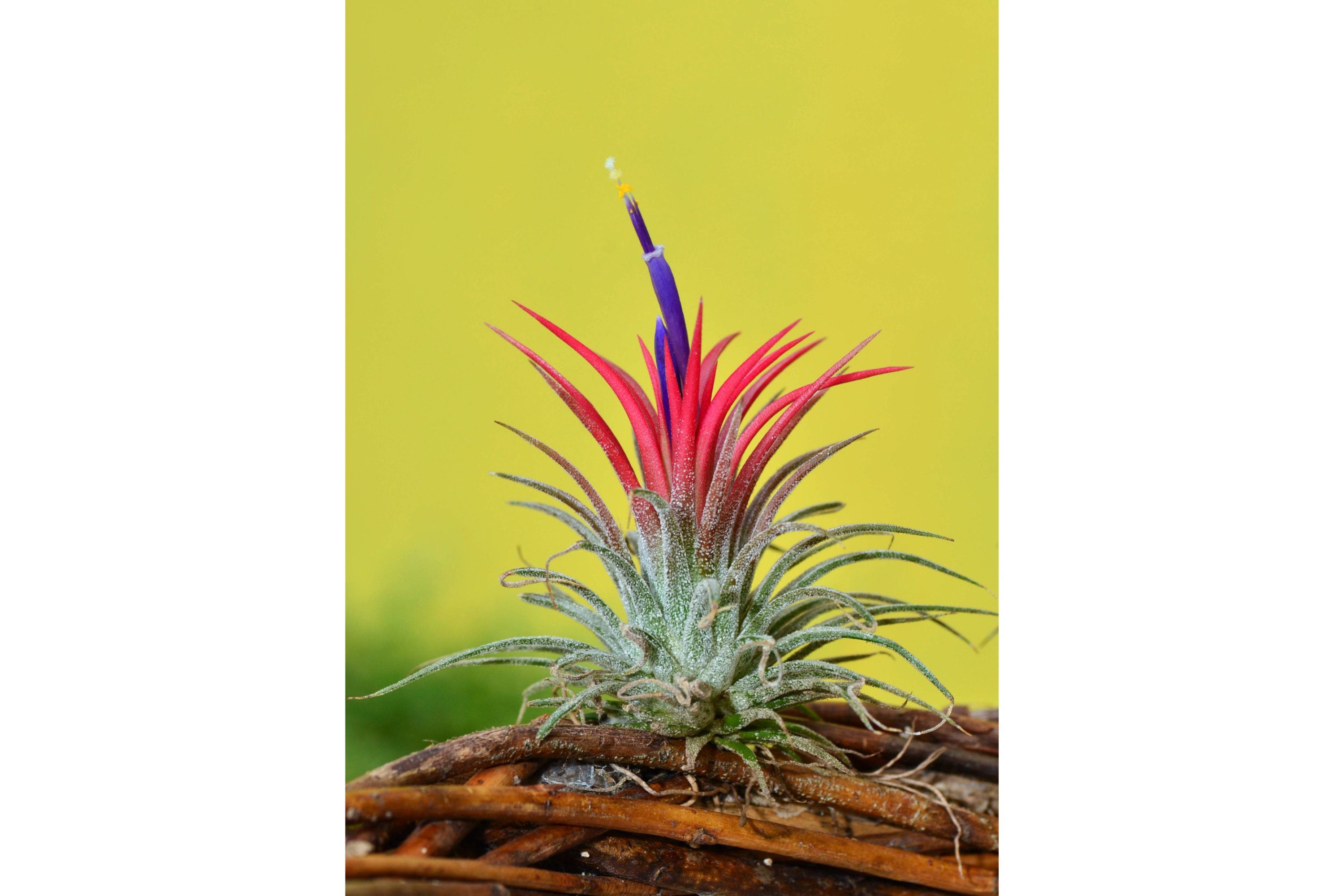Blushing bride airplant
(Tillandsia ionantha)

Description
Tillandsia ionantha, the air plant, is a species of plant in the genus Tillandsia. This species is native to Central America and Mexico. It is also reportedly naturalized in Broward County, Florida. They are acaulescent or sometimes shortly caulescent plants, with a size of 6–8 cm high. The leaves 4–9 cm long; with pods 0.6–1 cm wide, densely patent fabric; narrow triangular sheets, 0.3-0.4 cm wide, dense lepidota indument, foliaceous bracts; compound inflorescence (of simple appearance due to the reduction of the spikes to 1 flower), with 1-3 flowers, primary foliaceous bracts, much longer than the spikes, floral bracts 3 cm long, longer than the sepals and covering them in the anthesis, ecarinated, inconspicuously nervate, glabrous, membranous, sessile flowers; sepals are 2 cm long, free, the posterior carinate, the anterior ecarinated; purple petals. Capsules are 2.5-4.5 cm long. Tillandsia is a genus of around 650 species of evergreen, perennial flowering plants in the family Bromeliaceae, native to the forests, mountains and deserts of northern Mexico and south-eastern United States, Mesoamerica and the Caribbean to mid Argentina. Their leaves, more or less silvery in color, are covered with specialized cells (trichomes) capable of rapidly absorbing water that gathers on them. Sometimes they are also commonly known as airplants because of their natural propensity to cling wherever conditions permit: telephone wires, tree branches, barks, bare rocks, etc. Their light seeds and a silky parachute facilitate this spread. Most Tillandsia species are epiphytes which translates to 'upon a plant'. Some are aerophytes, which have a minimal root system and grow on shifting desert soil. Due to their epiphytic way of life, these plants will not grow in soil but live on the branches of trees, in deserts and on other substrates that will not be saturated with water for very long. Tillandsia are perennial herbaceous plants which exhibit a multitude of physiological and morphological differences making this a diverse genus. Having native habitats that vary from being epiphytic and saxicolous, species have certain adaptations, such as root systems designed to anchor to other plants or substrates, and modified trichomes for water and nutrient intake. Some of the species, like the majority of Bromeliaceae, grow as funnel bromeliads, with a compressed stem axis.
Taxonomic tree:







